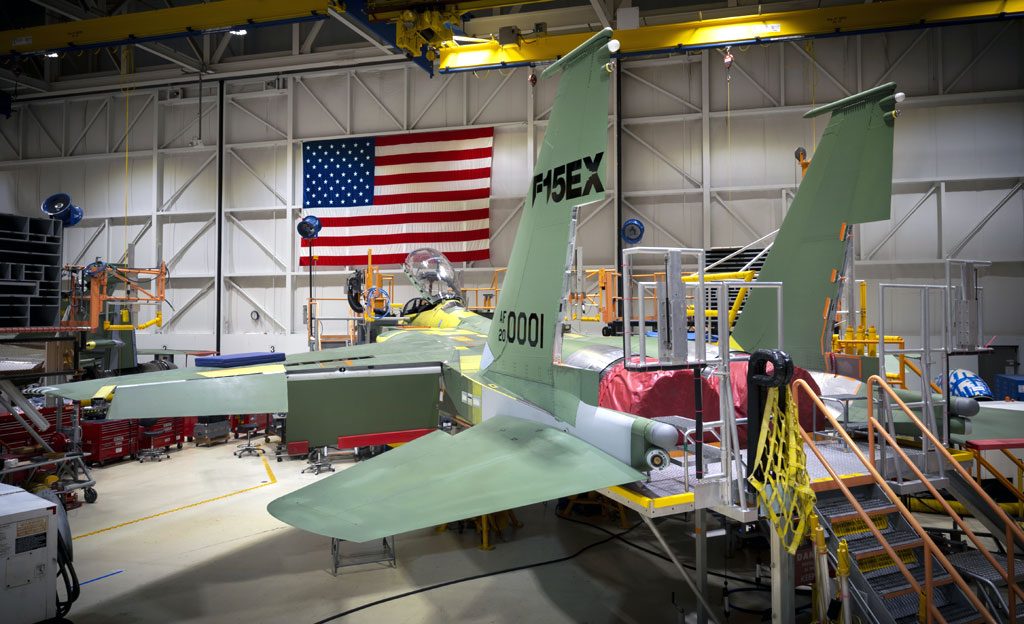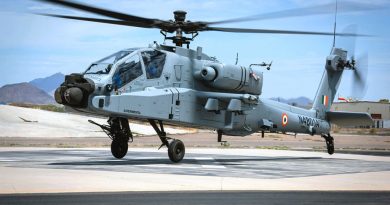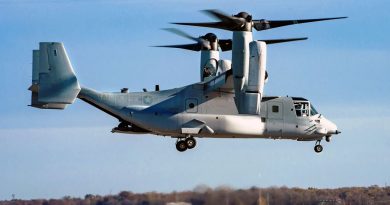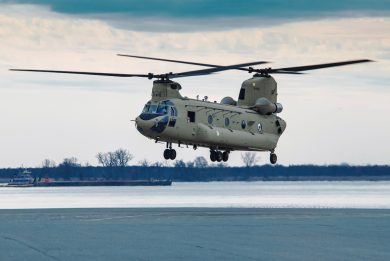
F-15EX: long life to the Eagle
The good news for Boeing came two days before the webinar, when on July 13th the U.S. Air Force awarded the company a nearly $1.2 billion contract to build the first lot of eight F-15EX advanced fighter jets. Twelve more jets were requested for FY2021, Prat Kumar, Vice President and Program Manager Boeing F-15 Programs, said, the minimum number of F-15EX in Defence Budget 2021 being established at 144, the Indefinite Delivery/Indefinite Quantity contract referring to 22.89 billion US$ for a maximum of 200 aircraft. Kumar also underlined that the delivery of the first two aircraft is scheduled for Q1 2021, this because Boeing anticipated the decision and it will take only nine months, much less than the normal lead time for an F-15.22.89 billion US$.
The first two F-15EX will start flight tests, to be followed by the remaining jets within 2023, four of the latter to be instrumented and used for the Development Test and Operational Test programmes run by the Air Force. When the test programme will end all those six jets can be converted into operational aircraft.
Two were the main objectives of the F-15EX programme, the first being to quickly recapitalise the fleet providing the warfighter a production ready jet that can be easily incorporated in the service, i.e. minimising the pilot training. The second is to make a considerable step forward compared to the F-15E that flies with the USAF and dates back 20 years ago. Among improvements the F-15X includes the Advanced Display Core Processor II, which is the fastest mission computer installed on a fighter jet according to Kumar, and the Operational Flight Program Suite 9.1X, the Suite 9 being common to all the USAF F-15s the “X” version being dedicated to the F-15EX ensuring full interoperability among the whole fleet. Boeing worked on a new open mission system architecture to integrate in a more efficient way third party elements and new technologies along the aircraft operational life, all digital subsystems being linked via the aircraft digital backbone which is based on high speed optical fibre cables to maximise speed and throughput. The system adopted is in line with DevSecOps (Development, Security and Operations) concepts, Kumar underlining that the F-15EX is considered by the Department of Defence a pathfinder programme for DefSecOps. The latest iteration of the original Eagle also integrates the Advanced Cockpit System, which is already fitted to the Qatari aircraft, the 10×19-inch Large Area Displays being available for both crew members, these displays as well as the Low Profile HUD being provided by Elbit Systems of America. The touch-screen multifunction colour displays have a much greater area compared to those installed on previous F-15 versions, and can be used as a single screen format or split into smaller formats. Another major improvement is the new Digital Joint Helmet-Mounted Cueing System, provided by Collins Elbit Vision System, which is a much enhanced version of the previous JHMCS helmet.
The AESA Raytheon AN/APG-82 radar, together with the new Electronic Warfare suite and the Eagle Passive/Active Warning and Survivability System increase the aircraft survivability while lethality grows thanks to the 12 air-to-air stations available, along with the centreline single store that can carry a 6.7 meters long system with a maximum mass of 3,175 kg.
Moreover the F-15EX features enhanced fly-by-wire flight control systems, which were introduced on Saudi Arabian aircraft, that considerably improves the handling of the jet, the aircraft being able to pull manoeuvres up to 9g
Prat Kumar also underlined the digital engineering that was brought to the platform, which allowed improving manufacturability and sustainability as well as quality, while reducing costs at the same time. The company leveraged the experience acquired with the T-7A, which was entirely built using digital engineering as it started from a white sheet, using that system where applicable to design the latest version of the F-15. The advanced manufacturing technology was first applied to the nose barrel and then to the wings. The F-15EX becomes a pathfinder for the Digital Century Series concept that is often referred to by Will Roper, the Assistant Secretary of the Air Force for Acquisition, Technology and Logistics, which aims at allowing the rapid evolution of new platforms. According to Kumar digital engineering also widens the supply base, providing these subcontractors are equipped with 3D modelling technology, creating a healthy competition in terms of quality and cost.
Looking ahead Prat Kumar mentioned the manned-unmanned teaming capability, which is part of the company Airpower Teaming System (ATS), also known as the Loyal Wingman project. The aircraft advanced avionics and open mission system make it a perfect platform for integrating such new capacities, Boeing looking forward to work with the USAF to further define this concept and make it available in the future.
The F-15EX is a two-seater aircraft, however it can be operated as a single-seater, the rear seat remaining empty. Prat Kumar explains that it will be an Air Force decision if using or not the second cockpit, rumours about the addition of artificial intelligence exploiting the rear seat space being around. The second seat might also be occupied by an operator in charge of dealing with unmanned systems, but all this has still to be decided by the USAF.
Among new sensors the F-15EX will be capable to carry Lockheed Martin’s Legion pod, this IRST (InfraRed Search and track) system being among the USAF programmes of records, having been seen on an F-15C during a 2019 exercise in Alaska. This will be carried on the centreline pylon, which can also carry other systems such as sensors, fuel tanks or weapons, among them hypersonic missiles should the USAF decide to install it on the F-15EX.
Coming to the international arena, Kumar mentioned the current F-15 operators, Israel, Japan, Saudi Arabia, Singapore and South Korea, the last addition being Qatar which first F-15 flew in April 2020, featuring the new cockpit which according to the F-15 Program Manager is very much appreciated by the company test pilots.
Boeing is answering a Request for Information from Israel, the Israeli Air Force looking for 25 new fighters as well as to an update of another 25 already in service. Boeing is ready to integrate into existing F-15I jets most of the EX technologies, with the exception of the fly-by-wire flight control system. This is true also for Japan, to which the company is offering the addition of the ACS, the AESA radar and the new EW suite for what will become the F-15JSI (Japanese Super Interceptor).
As for India Boeing has just requested a marketing license to start discussions with Delhi, thus so far all discussions have been at Air Forces level or governmental level. India is looking at acquiring 114 aircraft and Boeing is awaiting the requirements definition to understand if the latest versions of the F-15 might answer India’s need.
Considering running contracts, such as that for Saudi Arabia and that for Qatar, the latter nation having signed a contract for 36 aircraft while the US Congress approved the sale of 72 F-15QA, and the recently awarded F-15EX domestic contract, Boeing forecasts the F-15 production line to remain active beyond the next decade, the work being centred in Saint Louis with over 1,500 employees working on the Eagle, while about 55,000 are working within the around 400 companies supply base all over the United States.
Photo courtesy Boeing



